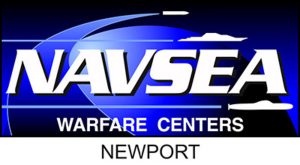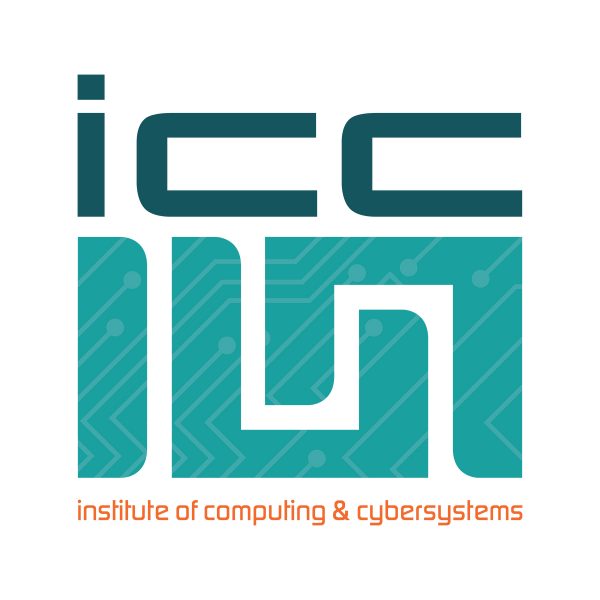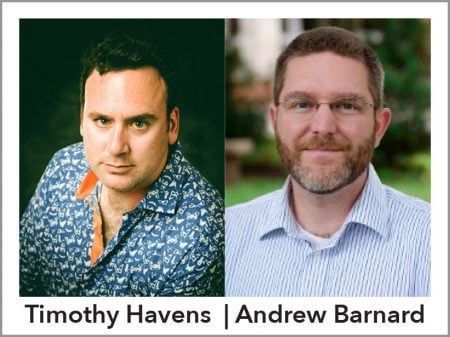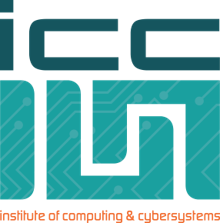
Timothy Havens, the William and Gloria Jackson Associate Professor of Computer Systems, has co-authored a paper recently published in The Journal of the Acoustical Society of America, Volume 50, Issue 1.
The paper is titled, “Recurrent networks for direction-of-arrival identification of an acoustic source in a shallow water channel using a vector sensor.” Havens’s co-authors are Steven Whitaker (EE graduate student), Andrew Barnard (ME-EM/GLRC), and George D, Anderson, US Naval Undersea Warfare Center (NUWC)-Newport.
The work described in the paper was funded by the United States Naval Undersea Warfare Center and Naval Engineering Education Consortium (NEEC) (Grant No. N00174-19-1-0004) and the Office of Naval Research (ONR) (Grant No. N00014-20-1-2793). This is Contribution No. 76 of the Great Lakes Research Center at Michigan Technological University.
Abstract
Conventional direction-of-arrival (DOA) estimation algorithms for shallow water environments usually contain high amounts of error due to the presence of many acoustic reflective surfaces and scattering fields. Utilizing data from a single acoustic vector sensor, the magnitude and DOA of an acoustic signature can be estimated; as such, DOA algorithms are used to reduce the error in these estimations.
Three experiments were conducted using a moving boat as an acoustic target in a waterway in Houghton, Michigan. The shallow and narrow waterway is a complex and non-linear environment for DOA estimation. This paper compares minimizing DOA errors using conventional and machine learning algorithms. The conventional algorithm uses frequency-masking averaging, and the machine learning algorithms incorporate two recurrent neural network architectures, one shallow and one deep network.
Results show that the deep neural network models the shallow water environment better than the shallow neural network, and both networks are superior in performance to the frequency-masking average method.
Citation: The Journal of the Acoustical Society of America 150, 111 (2021); https://doi.org/10.1121/10.0005536Steven Whitaker1,b), Andrew Barnard2, George D. Anderson3, and Timothy C. Havens4

Thomas Oommen, Timothy C. Havens, Guy Meadows (GLRC), and Himanshu Grover (U. Washington) have been awarded funding in the NSF Civic Innovation Challenge for their project, “Helping Rural Counties to Enhance Flooding and Coastal Disaster Resilience and Adaptation.”
The six-month project award is $49,999.
Vision. The vision of the new project is to develop methods that use remote sensing data resources and citizen engagement (crowdsourcing) to address current data gaps for improved flood hazard modeling and visualization that is transferable to rural communities.
Objective. The objective of the Phase-1 project is to bring together community-university partners to understand the data gaps in addressing flooding and coastal disaster in three Northern Michigan counties.
The Researchers
Thomas Oommen is a professor in the Geological and Mining Engineering and Sciences department. His research efforts focus on developing improved susceptibility characterization and documentation of geo-hazards (e.g. earthquakes, landslides) and spatial modeling of georesource (e.g. mineral deposits) over a range of spatial scales and data types. Oommen is a member of the ICC’s Center for Data Sciences.
Tim Havens is associate dean for research, College of Computing, the
William and Gloria Jackson Associate Professor of Computer Systems, and director of the Institute of Computing and Cybersystems. His research interests include mobile robotics, explosive hazard detection, heterogeneous and big data, fuzzy sets, sensor networks, and data fusion. Havens is a member of the ICC’s Center for Data Sciences.
Guy Meadows is director of the Marine Engineering Laboratory (Great Lakes Research Center), the Robbins Professor of Sustainable Marine Engineering, and a research professor in the Mechanical Engineering-Engineering Mechanics department. His research interests include large scale field experimentation in the Inland Seas of the Great Lakes and coastal oceans; nearshore hydrodynamics and prediction; autonomous and semi-autonomous environmental monitoring platforms (surface and sub-surface); underwater acoustic remote sensing; and marine engineering.
Himanshu Grover is an asssistant professor at University of Washington. His research focus is at the intersection of land use planning, community resilience, and climate change.
About the Civic Innovation Challenge
The NSF Civic Innovation Challenge is a research and action competition that aims to fund ready-to-implement, research-based pilot projects that have the potential for scalable, sustainable, and transferable impact on community-identified priorities.

Dr. Timothy Havens (ICC), Dr. Andrew Barnard (GLRC), Dr. Guy Meadows (GLRC), and Dr. Gowtham (IT/ECE) have been awarded an Office of Naval Research DURIP grant titled, “Acoustic Sensing System and High-Throughput Computing Environment and Threat Monitoring in Naval Environments Using Machine Learning.”
The $243,169 award will fund procurement of new high throughput computing and underwater acoustic sensing systems for use by researchers at Michigan Tech.
The Defense University Research Instrumentation Program (DURIP) supports universities through awards meant to build the infrastructures necessary for relevant, high-quality Navy research.
We believe that these resources will considerably multiply our capability and productivity in assisting the U.S. Navy, and DoD at large, to move forward on numerous fronts. We have excellent resources, but lack some infrastructure capabilities to make a leap in theory and applications.
Havens says that the award supports two active U.S. Navy projects in particular, “ONR Graduate Traineeship Award: Multi-Modal, Near-Shore, Ice-Covered Arctic Acoustic Propagation Measurements and Analysis (ONR #N00014-18-1-2592)” and “Localization, Tracking, and Classification of On-Ice and Underwater Noise Sources Using Machine Learning (US NSWC #N00174-19-1-0004).”
“With this new equipment we can begin to conduct more detailed, realistic, and repeatable sensor/target experiments, and facilitate expansion of current research into related areas of interest to the DoD, such as deep learning with digital phased arrays and persistent, distributed sensing with sensor arrays,” Havens notes.
“The equipment will significantly enhance Michigan Tech capabilities for six other Department of Defense (DoD)-funded projects as well, including NGA, SPAWAR, and DARPA awards,” he adds.
Finally, through graduate student participation in the research, and collaboration with the undergraduate SENSE Enterprise at Michigan Tech (Strategic Education through Naval Systems Experiences), the equipment will augment Navy STEM education and future workforce development.
Tim Havens is associate dean for research, College of Computing, the William and Gloria Jackson Associate Professor of Computer Systems, and director of the Institute of Computing and Cybersystems.
Andrew Barnard is director of the Great Lakes Research Center,
associate professor, Mechanical Engineering—Engineering Mechanic, and Faculty advisor to the undergraduate SENSE Enterprise.
Guy Meadows is director of the Marine Engineering Laboratory, the Robbins Professor of Sustainable Marine Engineering, and a research professor in the Department of Mechanical Engineering-Engineering Mechanics.
Gowtham is director of research computing for Michigan Tech’s Information Technology department; an adjunct assistant professor, Physics; a research associate professor, Electrical and Computer Engineering; and an NSF XSEDE Campus Champion.

The Institute of Computing and Cyberersystems (ICC) promotes collaborative, cross-disciplinary research and learning experiences through six research centers in the areas of computing education, cyber-physical systems, cybersecurity, data sciences, human-centered computing, and scalable architectures and systems, for the benefit of Michigan Technological University and society at large.
The ICC’s 55 members represent more than 20 academic disciplines at Michigan Tech. Member scientists are collaborating to conduct impactful research, make valuable contributions in the field of computing, and solve problems of critical national importance.

The Great Lakes Research Center (GLRC) provides state-of-the-art laboratories to support research on a broad array of topics. Faculty members from many departments across Michigan Technological University’s campus collaborate on interdisciplinary research, ranging from air–water interactions to biogeochemistry to food web relationships.
One of the GLRC’s most important functions is to educate the scientists, engineers, technologists, policymakers, and stakeholders of tomorrow about the Great Lakes basin. The Center for Science and Environmental Outreach provides K–12 student, teacher, and community education/outreach programs, taking advantage of the Center’s many teaching labs.
The GLRC also contains a lake-level marine facility and convenient deep-water docking, providing a year-round home for Michigan Tech’s surface and sub-surface fleet of marine vehicles.